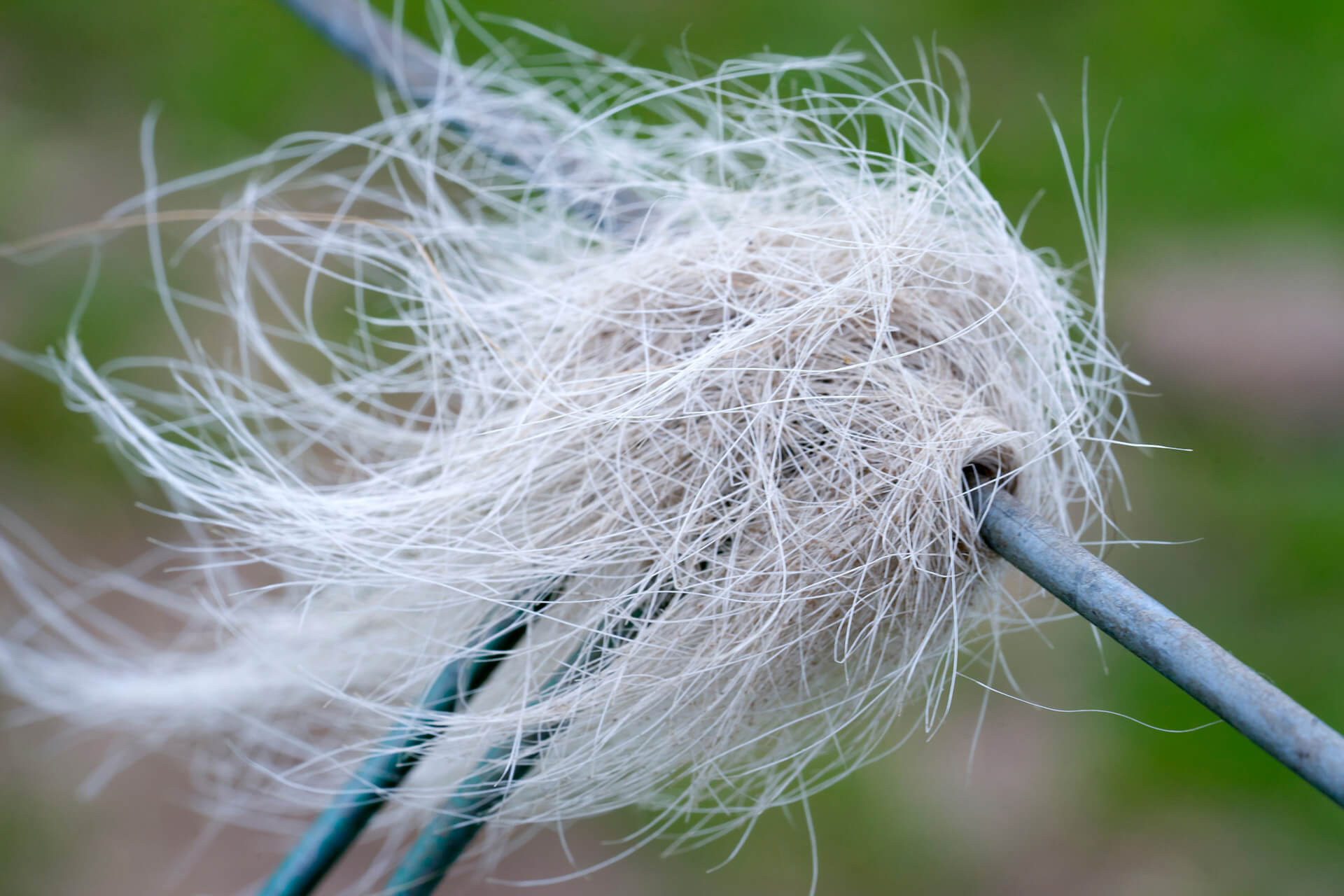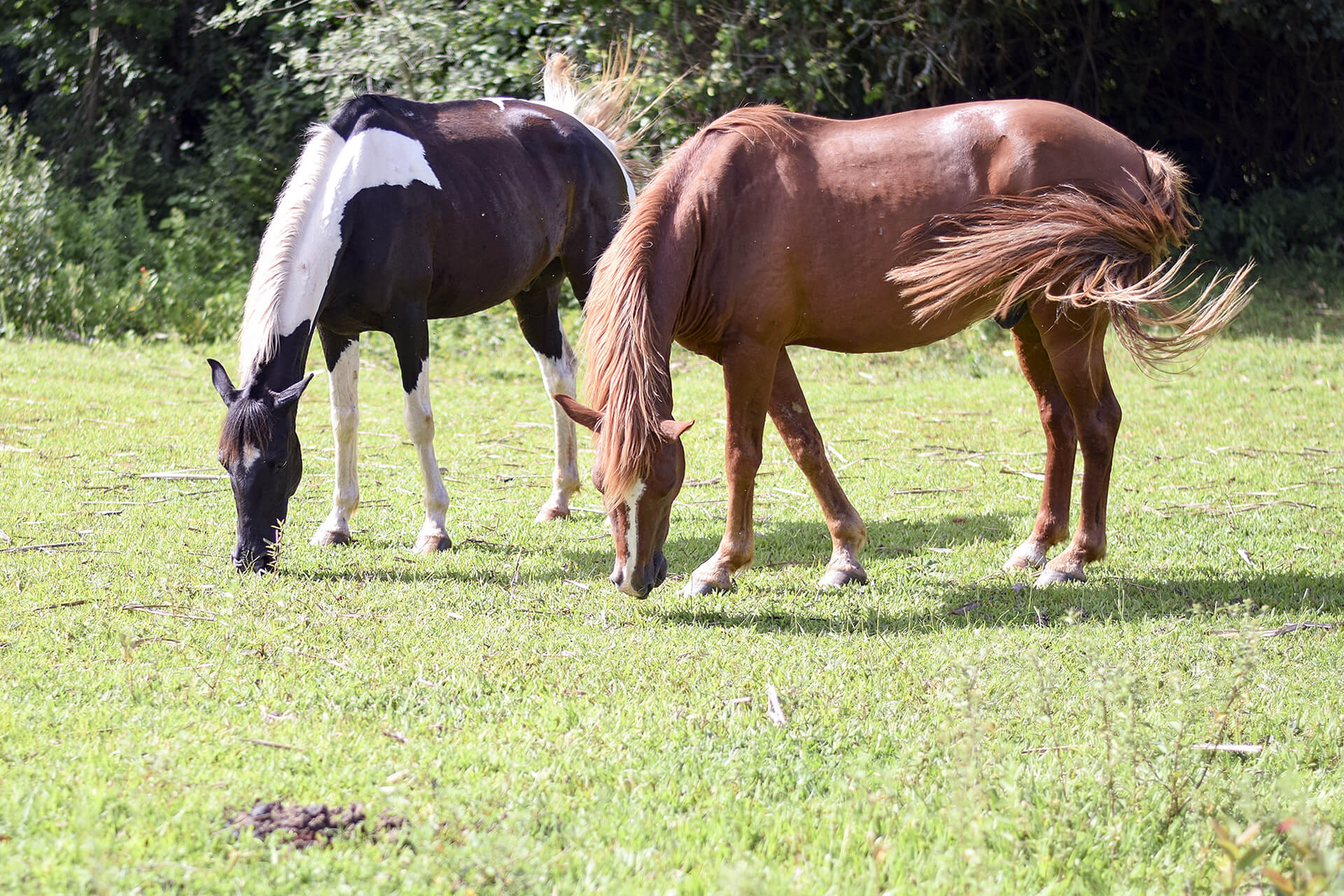Scratch that Itch: Common Reasons for Horse Tail Rubbing

Most horse owners dream of having a horse with a long, thick, shiny mane and tail, and go to great lengths to make it look beautiful. So, when you walk out to the barn to find your horse’s tail tattered and worn from rubbing, you immediately try to determine why he did this and how you can stop him from doing it again.
Reasons for Tail Rubbing
There are several different reasons why your horse may be rubbing his tail, but it’s best to start by answering a few questions. Is this the first time he’s done it, or does he rub his tail often? Does he only rub his tail during certain times of the year or is it a year-round occurrence? It’s important to determine which of the following causes of tail rubbing are at work, so you can take the proper steps to prevent it.
Boredom
Although boredom is a minor cause of tail rubbing, it can be a result of stall confinement and become more of a habit, which can be tricky to counteract. Some horses seem to simply enjoy rubbing their rump along a fence line or hay rack. Tail rubbing is not as common of a habit as cribbing, but it may fit on the same spectrum of behavior issues. If you suspect your horse is bored, you can try giving him more time outside of the stall to run and explore, a friendly companion in the paddock to play with, or offer him a horse toy to provide mental stimulation.

Dirty Sheath or Udder
Geldings and mares will commonly rub their tails if their sheaths or udders needs to be cleaned. All horses produce smegma, a thick, black substance that’s made up of dead skin cells and natural oils mixed with dirt and dust from the horse’s environment, that accumulates between the folds of the horse’s genitalia. When enough smegma builds-up, it can begin to irritate the horse. Since horses cannot reach their sheaths or udders to scratch, they tend to rub their tails instead. To remedy the situation, thoroughly clean your horse’s sheath or udder. If your horse won’t allow you to clean it, have your veterinarian sedate your horse before cleaning. Some horses naturally produce more smegma than others, so make sure to check the genitalia regularly for build-up. It’s important to note that this behavior is not common in active breeding stallions since they are regularly cleaned before breeding.

Dry, Itchy Skin
Check to see if your horse’s skin is dry or flaky. A horse that has dry or flaky skin can become very itchy and begin rubbing his tail to “scratch the sweet spot.” Many horse owners often want to bathe their horses to remove the dander and help soothe the skin; however, the use of shampoo can sometimes exacerbate the situation. When bathing your horse, make sure to use a gentle, moisturizing shampoo like the Horse Health™ 2-in-1 Shampoo & Conditioner, and rinse off thoroughly until water runs clear. Flaky skin may also be a result of hot, dry weather. Horses that get dry skin and dull coats in the summertime may benefit from additional omega 3 & 6 fatty acids in their diet. Consider supplementing your horse with a product high in omega 3 & 6 fatty acids.

Insect Hypersensitivity
If your horse’s tail rubbing primarily occurs in the spring and summer, the underlying cause may be from Culicoides midge bites. In horses, the biting midge (Culicoides genus) have been known to cause “sweet itch,” a hypersensitivity to the saliva in the insect bite, which is a type of chronic and seasonal skin irritation. Horses with sweet itch will often rub their tails bald, since the act of scratching the area only worsens the itch. These tiny, irritating flies are also known as sand flies, punkies and no-see-ums. They are mainly present during dawn or dusk, so make sure to either keep your horse inside the barn during this time, apply a fly repellent spray, or use fly masks and sheets to create a physical barrier. Since these insects are poor fliers, you might also want to put fans in your horse’s stall to deter them from getting near your horse.
Ticks
Although they’re a less-common cause, ticks can cause irritation and rubbing if they attach to your horse’s tail head, tailbone or surrounding areas. On-animal repellent sprays that are labeled for ticks can help keep ticks away from your horse. Managing your barn environment will also help to eliminate ticks. Regularly mowing the overgrown grassy areas around your paddocks and barns will help to minimize tick populations and discourage other wildlife that carry ticks from entering your property.

Pinworms
Internal parasites can also be a cause of tail rubbing. The most common parasite tied to tail rubbing is the pinworm (Oxyuris equi), which causes rectal irritation. Pinworms are mostly seen in younger horses under the age of two but can be found in adult horses as well. Pregnant pinworms migrate through the intestines to lay their eggs around the anus, using a sticky biofilm to hold the eggs in place. You may notice white or dirty yellow crusts around your horse’s rectum when pinworms lay eggs.
The eggs become infective after about 3-5 days and will fall off the horse’s rectum, landing in the pasture or stall. Horses can also deposit pinworm eggs when they rub against items such as fencing, feeders or water troughs to scratch their bottom. A horse becomes infected when he accidentally ingests the larvae while grazing or eating the hay in his stall – and even by rubbing his face on an infected horse’s rear end.
Since eggs are not passed through manure, a fecal examination will not reveal the presence of pinworms. If you believe your horse may have pinworms, contact your veterinarian and have him examined. Your vet will most likely take a piece of clear tape and dab it around your horse’s anal area in hopes of picking up any eggs still attached there and look at it under a microscope.
If your horse has pinworms, talk with your veterinarian about a deworming program. An ivermectin-based dewormer, like Horse Health™ (ivermectin paste) 1.87%, is one active that is commonly used to treat pinworms. If ivermectin does not stop the rubbing, or if more eggs are found on your horse post-treatment, a follow-up deworming treatment may be required. This can include a double dose of pyrantel pamoate, which is also the dose commonly used for tapeworms.
As you can see, there are many reasons why your horse could be rubbing his tail. In order to get to the root cause of the tail rubbing, you may need to do some detective work and a little trial-and-error. When in doubt, seek help and consult your veterinarian. Once the reason has been identified, you can create a plan of action and get your horse’s tail looking full and shiny in no time!
E-mail Signup
Sign up for our newsletter to get helpful horse care tips, product updates, special offers and more.
Subscribe

